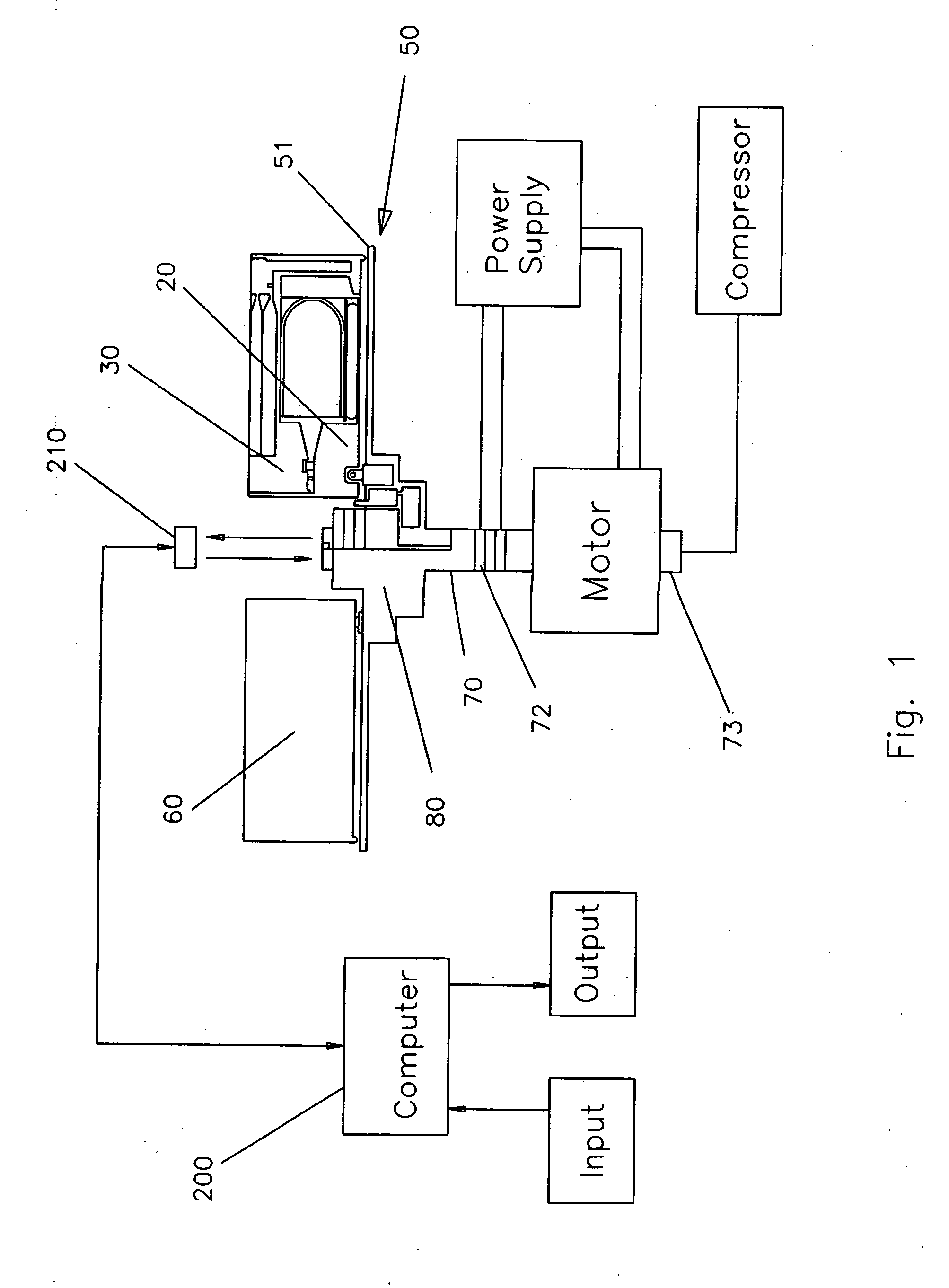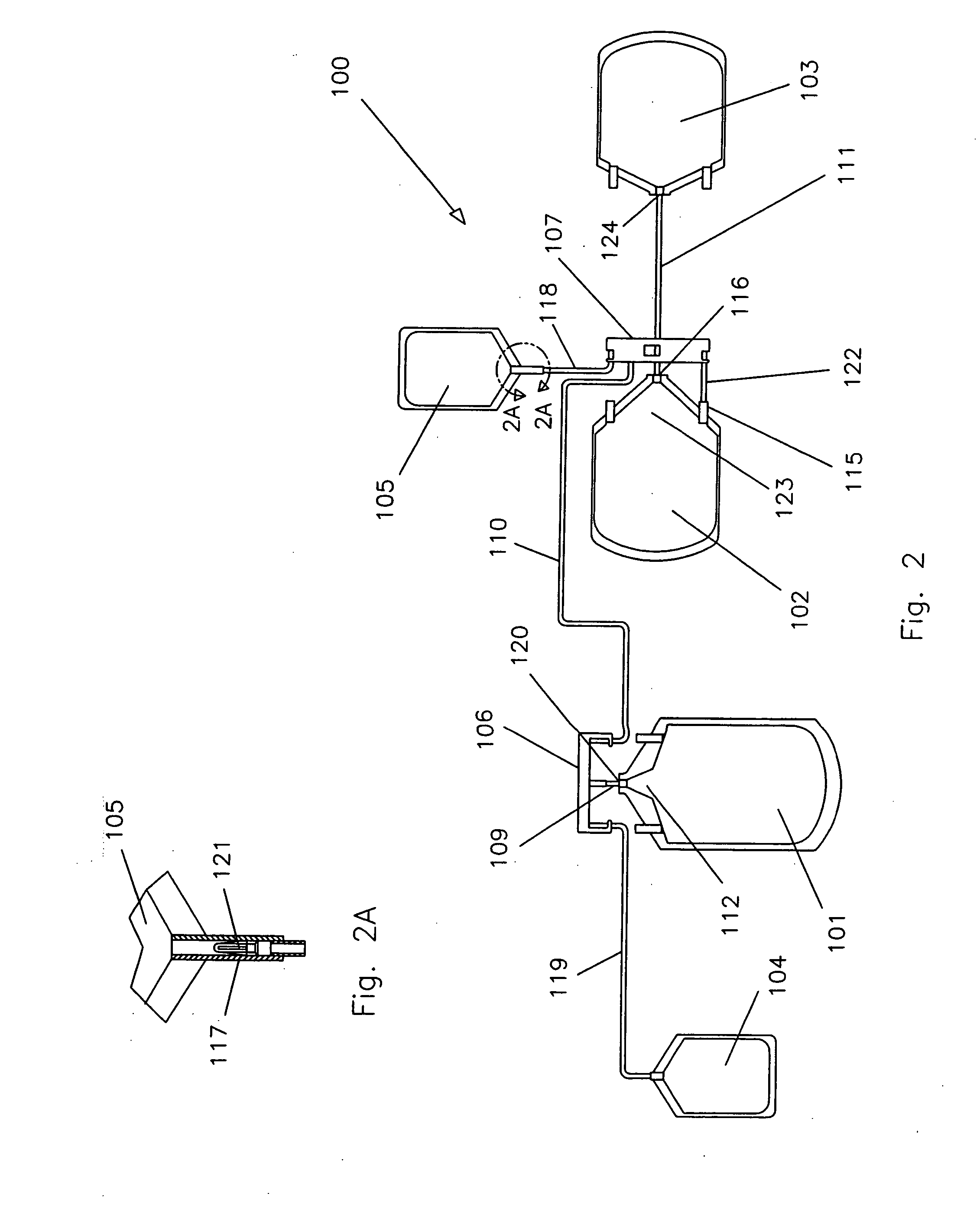Automated system and method for blood components separation and processing
a technology of blood components and automatic processing, applied in separation processes, centrifuges, therapy, etc., can solve the problems of rbc or wbc mixed with plasma or platelets, a known threat to product quality, contamination of plasma by rbc or wbc, etc., to improve the quality of medical care and reduce the wbc count
- Summary
- Abstract
- Description
- Claims
- Application Information
AI Technical Summary
Benefits of technology
Problems solved by technology
Method used
Image
Examples
Embodiment Construction
[0104] Referring to FIG. 2, a disposable set of blood processing bags or conatiners 100 is used to collect blood from a normal donor using standard blood collection method. A phlebotomy needle (not shown in FIG. 2) is inserted in the donor's vein and blood is allowed to flow from the needle through a tube connected to the primary bag 101. When desired amount of blood is collected in the primary bag, the tubing connected to the needle is heat sealed and disconnected from the set.
[0105]FIG. 17 shows a schematic view of a syringe blood processing disposable set. The blood processing set 100 is comprised of a primary bag that is interconnected to multiple satellite bags. All primary and satellite bags are preferably made of flexible plastic material. In FIG. 2, the primary bag 101 is connected to RBC manifold 106. The RBC manifold 106 is preferably made of rigid plastic. It has one inlet that receives the flow exiting the primary bag 101 through tubing 109, and two outlets. One outlet ...
PUM
| Property | Measurement | Unit |
|---|---|---|
| angle | aaaaa | aaaaa |
| angle | aaaaa | aaaaa |
| angle | aaaaa | aaaaa |
Abstract
Description
Claims
Application Information
 Login to View More
Login to View More - R&D
- Intellectual Property
- Life Sciences
- Materials
- Tech Scout
- Unparalleled Data Quality
- Higher Quality Content
- 60% Fewer Hallucinations
Browse by: Latest US Patents, China's latest patents, Technical Efficacy Thesaurus, Application Domain, Technology Topic, Popular Technical Reports.
© 2025 PatSnap. All rights reserved.Legal|Privacy policy|Modern Slavery Act Transparency Statement|Sitemap|About US| Contact US: help@patsnap.com



